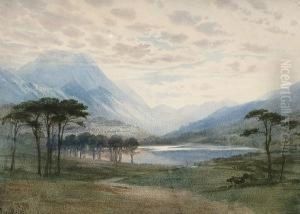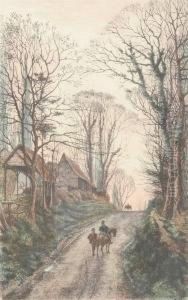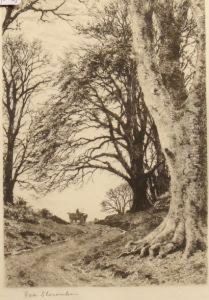Alfred Slocombe Paintings
Alfred Slocombe was a British landscape painter, best known for his pastoral and tranquil depictions of the British countryside. Born in 1820 in England, Slocombe grew up during a period when the British art scene was dominated by Romanticism. His works, however, often reflected a transition to the more detailed and pastoral focus of the Victorian era.
Slocombe's artistic journey began when he was quite young, showing an early talent for capturing the landscapes around him. Despite the lack of extensive records on his education, it is widely believed that he received some form of formal art training. Throughout his career, Slocombe exhibited a strong preference for the English landscape, which he rendered with a delicate touch and a keen eye for detail, light, and atmosphere.
During his lifetime, Alfred Slocombe became a respected artist, although he never reached the same level of fame as some of his contemporaries like J.M.W. Turner or John Constable. He exhibited his works at various prestigious institutions, including the Royal Academy and the British Institution. His paintings were appreciated for their peacefulness and technical skill, often featuring rural scenes, farm animals, and country life that resonated with Victorian sensibilities.
Slocombe's contribution to British art is also seen in his influence on other artists. He was part of a larger movement that celebrated the English countryside, which was becoming increasingly nostalgic in the face of rapid industrialization and urbanization. His works can now be found in various art collections, both private and public, and continue to be appreciated for their serene beauty and historical value.
Alfred Slocombe passed away in 1890, leaving behind a legacy of artwork that continues to be studied and admired. His paintings capture a bygone era of rural England with a charm and fidelity that speak to the universal human connection to the landscape and nature.


